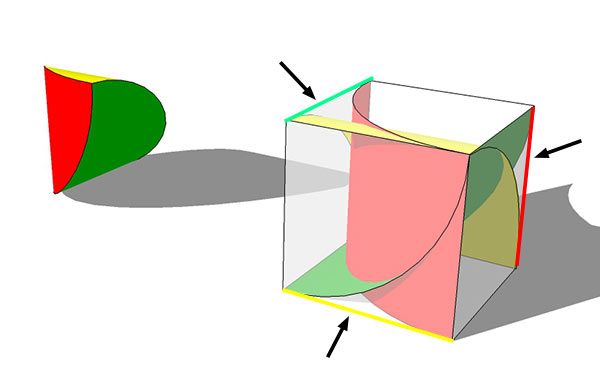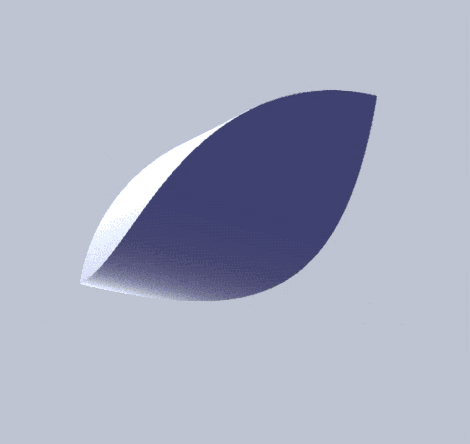| g e n u i n e i d e a s | ||||||
 |
 |
 |
 |
 |
 |
 |
| home | art and science |
writings | biography | food | inventions | search |
| three faced |
|
Feb 2016
|
|
On occasion, students ask if it is possible to create a three-sided die for use in one of their board games. There are many possible approaches, but the most common (and to my mind most beautiful) method is to start with a cube and fillet three edges. A simple exercise in CAD design. A cube, of course, has six sides. Like the traditional numbered die. So if you blend adjacent pairs of sides together, effectively a three-sided die emerges. In some CAD programs, it is possible to simply select non-adjacent orthogonal edges (indicated by arrows below) and use them as the center of a round fillet. In other programs, the fillet's generation will conflict and is non-transitive. In this case, simply insert cylinders centered on each edge, and use a boolean intersection command to eliminate all but the common overlap.
This gif animates the resulting die in rotation:
An actual 3D printed die rolling: These shapes offer very few axes where a simple vise-like grip will hold without slipping. Which may indicate they are ideal geometries to avoid jamming when dispensed though a narrow orrifice. 3d FILES You can RIGHT click here for an STL file with a 1" die. Or, RIGHT click here for an STL file where the diagonal dimension has been shrunk so the three-sided die is closer to a cube in shape. This produces a more uniform rolling motion, as the principle axes are nearly identical.
|
Contact Greg Blonder by email here - Modified Genuine Ideas, LLC. |

